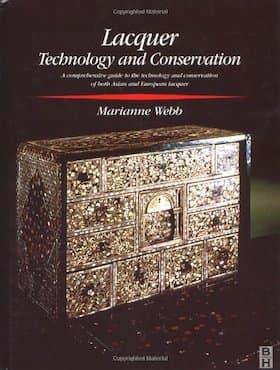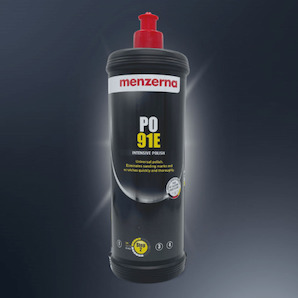
-----
Removing Scratches from Black Lacquer Furniture
Q. Dear Friends,
Just like your reader back in 2001, I have a black lacquer Italian bedroom set. My son has been using it for the last few years and the pieces are scratched from moving stuff on it, especially the dresser. Is there any way to remove these scratches, or to at least make them appear less noticeable? Please let me know if you have any information (good web sites, new chemical compounds, etc.) that could help. I would appreciate a response ASAP.
Thank you,
- Helena, Montana
2003
A. Being the owner of several pieces of Italian black lacquer furniture myself, I can certainly relate to your situation. The finish on many of these items can be easily damaged in moving or in casual day to day use and black does have a tendency to show any defects.
There was a great deal of furniture produced that claimed to be lacquer and was actually a clear film bonded over a black coating and applied in sheets to the base material. Since you say that your furniture is Italian in origin I will assume that it is probably a sprayed polyurethane product. (much less fragile than the true lacquer furniture that comes from the orient)
My advise to you is to forget about the household products normally designed for furniture and head straight for the automotive section of your hardware store.
Urethane and polyurethanee finishes were originally introduced on airplanes but moved rapidly into the automotive industry to replace the acrylic and alkyd paints previously used. They are extremely durable and resistant to the two key solvents that are usually a problem to furniture - water and alcohol.
There are three options open to you and hopefully you can get by with the first one:
1) Reduce the appearance of the damage as much as possible: A good two step car wax will do a great deal to improve the appearance and both reduce and hide minor scratches. (They are specifically designed to do this on automotive finishes). A precleaner removes surface waxes and has a mild abrasive for removing any oxidization on the top surface. A color coded wax (
Turtlewax liquid car polish
[affil link] or the equivalent) will also help as will a 'wet finish' wax. Regularly maintaining two or three coats of wax on the surfaces that get the most use will also reduce the wear on those areas by providing a hard wax barrier.
2) Polish the damage out if minor: If the damage is too deep to be removed by the first process, you will need to proceed with a cutting compound to remove some of the surface and even out the area. Special
sandpaper designed to be used wet is also available in grits from 600 to 1200. This is followed by a polishing compound and topped off again with several hard coats of automotive wax as mentioned above. The exercise can be done carefully by hand, or with the aid of a power polisher. If you have not done this before and are unsure how to proceed - you are better off to hire an automotive detailing or retouch professional for a modest amount.
3) Re-coat the piece if necessary: This means re-spraying the piece that has been damaged - a job that can be contracted out to a furniture specialist or autobody shop. Please note that this is not something to be done lightly. There are many, many, many shades of black and you want your furniture to match afterwards. As well, black will show up any minor contaminants left in the spray gun from the previous color if you deal with the corner garage. If this step is necessary - deal with a professional.
Assuming the damage you are looking at is relatively minor, you can probably complete this project in an afternoon and have everything back in place for the evening.
Good luck.
- Laval, Quebec, Canada
---
Ed. note: Thanks for the very detailed and thoughtful posting, Burton!
Q. Please Help!
I have several pieces of Oriental furniture, different from the previous question of Italian black lacquer, that had a high black lacquer finish with inlaid mother of pearl in an oriental design. Over many years, the housekeepers would just clean with either Windex Commercial Line
⇦ on
eBay or
Amazon [affil link]
, or Pledge and now the finishes have become cloudy and dull. How do I bring back that high gloss finish and still not damage the mother of pearl inlaid design?
Thank you!
- Cocoa Beach, Florida
2007
A. I make a lot of furniture with black and colored lacquer finishes. If the surface is scratched be very careful to begin with the finest polishing compound available. Otherwise you might very easily go through the finish. Target Coatings has a product that I use in my shop called "Menzerna Intensive polish".
This is probably the only grade of polish a non professional should use. If you are not satisfied with the result and want to go deeper the next grade is a very fine paste made by the same company. After using the paste you will need to use the polish again.
If the scratches are deeper yet then you may have to live with them. Black lacquer is a skilled, time consuming and tricky process. It you cut through the lacquer then the pieces will have to be re-finished and not many shops do that properly.
- Ashland, Oregon
2007
Q. Our bathroom was done in an art deco style and has black lacquer wood cabinets and drawer fronts. Over time and use, the lacquer surfaces are smudgy, cloudy and have scratches. Is there anything that can be done to clean and restore the shiny surface?
Kristin Jamesonhomeowner, do-it-yourselfer - Beverly Hills, California
February 16, 2008
Q. I recently purchased an Italian kitchen, supposed to be in high quality black lacquer. However someone told me that my kitchen is simple black plastic, based on the fact that non-standard size units are cut to size, rather than made to size, and that the doors from inside are not lacquer. It looks black and shiny, so my question is: How can I tell the difference between true lacquer and plastic?
Natalia Mokhan- London, UK
March 10, 2009
Q. I am thinking of buying an Asian piece that has a noticeable gash through the lacquer approx. 1/2" long 1/16" wide down to the wood. Is that reparable or or not worth it? Will repairing it devalue the piece or be noticeable?
Julie Cradhobbyist - Los Angeles
June 23, 2010
Q. I have recently installed a black lacquered kitchen with tall decorative end panels. One of the panels is scored. How can I take it out without replacing the panel.
Barbra McGuire- GLASGOW, Scotland
May 31, 2012
Q, A, or Comment on THIS thread -or- Start a NEW Thread

